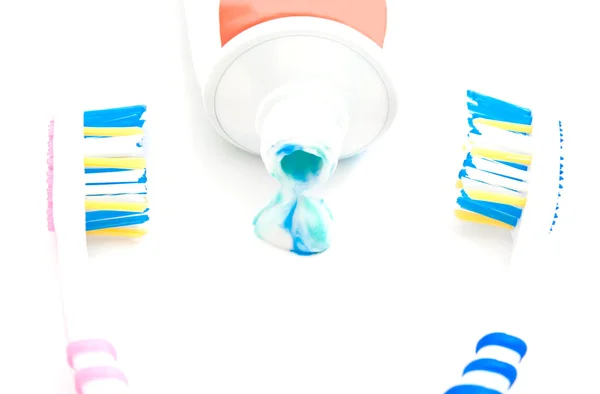Choosing the right toothpaste for your child can feel overwhelming, especially with the plethora of options available on store shelves. With colorful packaging and enticing flavors, it’s easy to get distracted from what truly matters: the health benefits of the toothpaste. This guide will help you navigate the world of children’s toothpaste, ensuring that you make informed choices that promote your child’s oral health.

Understanding Toothpaste and the Labels
Toothpaste is more than just a minty paste; it plays a crucial role in maintaining oral hygiene. When selecting toothpaste for children, it is essential to understand the various labels and what they signify.
Key Labels to Look For
- Fluoride Content: Fluoride is a mineral that helps strengthen tooth enamel and prevent cavities. The American Dental Association (ADA) recommends fluoride toothpaste for children aged two and older. Toothpaste for younger children typically contains lower levels of fluoride (around 500 parts per million) to minimize the risk of dental fluorosis, a condition caused by excessive fluoride intake during tooth development.
- ADA Seal of Acceptance: Look for this seal on packaging, which indicates that the product has undergone rigorous testing for safety and effectiveness.
- Age-Specific Formulations: Many brands offer toothpaste tailored to specific age groups, ensuring that the fluoride content and flavor are appropriate for your child’s needs.
What’s in Toothpaste?

Understanding the ingredients in toothpaste can empower parents to choose wisely. Common components include:
- Fluoride: The primary active ingredient in most toothpastes, fluoride helps remineralize enamel and reduce cavity risk. A study published by the Centers for Disease Control and Prevention (CDC) found that fluoride can reduce cavity rates by up to 40% in children.
- Abrasives: These ingredients, such as hydrated silica and calcium carbonate, help physically remove plaque and stains from teeth. Abrasives are essential for effective cleaning but should be balanced to avoid damaging sensitive enamel.
- Humectants: Ingredients like glycerin or sorbitol prevent toothpaste from drying out, ensuring a smooth texture.
- Detergents: Sodium lauryl sulfate (SLS) is commonly used as a foaming agent, helping to spread the toothpaste evenly during brushing.
- Flavoring Agents: Many children’s toothpastes come in fun flavors like bubblegum or strawberry to encourage regular brushing habits.
Also Read | Dental Deep Cleaning Alternatives: Everything You Need to Know
Dispelling Myths: Pediatric Dentistry Experts Offer Insights
Several myths surround toothpaste that can confuse parents. One common misconception is regarding color codes on toothpaste tubes. Many believe these codes indicate whether a product is natural or chemical-based. However, dental professionals clarify that these color marks are simply manufacturing aids used during production and have no bearing on the toothpaste’s ingredients or quality.
Another myth involves fluoride safety. While some parents worry about fluoride exposure, research supports its effectiveness in preventing cavities when used appropriately. The ADA states that supervised brushing with fluoride toothpaste significantly reduces dental caries among children.
Make the Best Choices for Your Child’s Oral Health

To ensure optimal oral health for your child, consider these practical tips:
- Choose Age-Appropriate Toothpaste: Select products designed specifically for children, which typically contain lower fluoride levels suitable for their age group.
- Encourage Regular Brushing: Teach your child to brush twice daily with fluoride toothpaste. Establishing this habit early can lead to lifelong oral health benefits.
- Monitor Usage: Supervise your child’s brushing routine until they can do it independently (usually around age 7). Ensure they use only a pea-sized amount of toothpaste.
- Consult Your Dentist: Regular dental check-ups can provide personalized recommendations based on your child’s specific needs and dental health history.
- Educate About Ingredients: Help your child understand why certain ingredients are beneficial for their teeth, fostering an appreciation for dental hygiene from an early age.
Conclusion
Selecting the right toothpaste for your child is crucial in establishing good oral hygiene habits and preventing dental issues down the line. By understanding the ingredients and labels on toothpaste packaging, debunking common myths, and making informed choices, you can ensure that your child maintains a healthy smile. Remember to consult with your dentist for tailored advice that meets your child’s unique needs.
By following these guidelines and staying informed about dental health products, parents can make confident choices regarding their child’s oral care routine, ultimately leading to healthier smiles.
Also Read | Baby Teeth Not Falling Out? Here’s What You Need to Know








